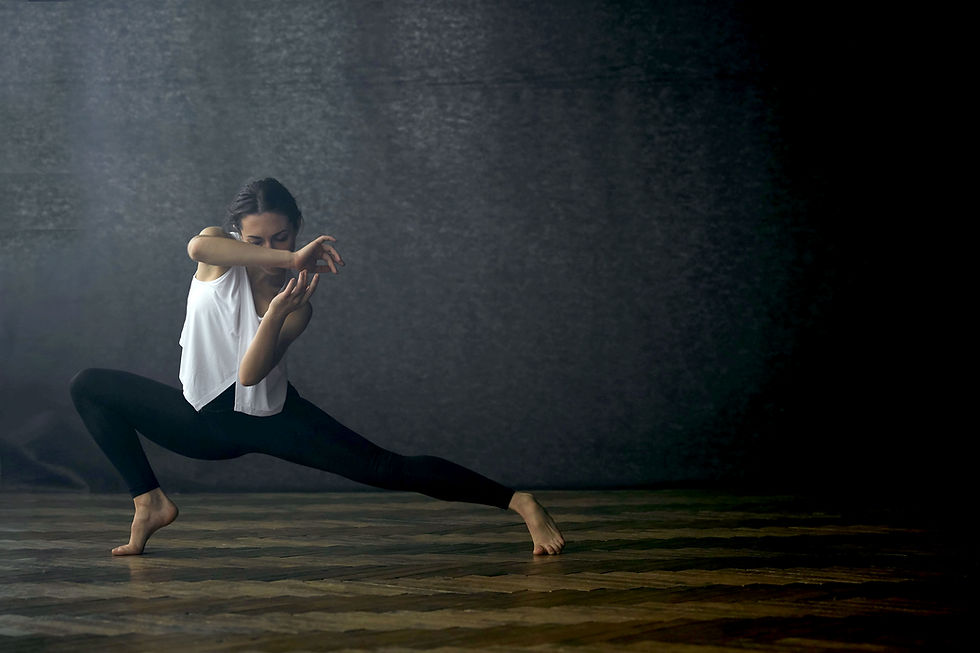Case Study: Talar Dome injury
- nataliej90
- Oct 20, 2021
- 3 min read
What is the talar dome?
The talar bone is one of the bones that make up your ankle joint, along with the tibia and fibula. The talar dome is the top of the talus bone which is dome shaped and is covered by a layer of cartilage. The cartilage allows smooth gliding of the talus and tibia (shin bone) which creates the movement of the ankle through pointe and flex movements.
How do you injure the talar dome? Injury to the talar dome is usually described as an osteochondral lesion. Osteo refers to bone, chondral referring to cartilage and lesion meaning tear. This means there is a tear in the layer of cartilage that sits on top of the talar bone and possible fracture of the bone itself, depending on the severity of injury. A talar dome lesion usually occurs following a severe ankle sprain where the joint is pushed in a sideways direction and the talar dome can be pressed against the tip of the tibia bone. The dancer may complain of a sharp pain or ache that is triggered by movement but the pain lingers for a prolonged time despite stopping activity and resting. A talar dome injury is not usually detected straight away as there is usually quite a bit of swelling and associated acute pain after a severe ankle sprain which makes it more difficult to identify underlying injuries.
What does it feel like?
Typical symptoms of a talar dome lesion are pain, swelling and stiffness that are present despite the acute ankle sprain settling. Dancing and other physical activity usually flares-up the injury. Flexing and pointing the ankle would aggravate a talar dome injury as the injured cartilage is being rubbed and compressed. There may be a feeling of clicking, catching or locking at the ankle. Further, jumping would be extremely painful as you have increased force and stress on the joint.
When should I see a physiotherapist?
It is a good idea to seek physiotherapy treatment following an ankle sprain to diagnose the severity of sprain, clear further potential injuries, speed up recovery and develop a rehabilitation program. Research shows that if you experience an ankle sprain you are more likely to experience future sprains and experience ongoing instability. Rehabilitation after your sprain however can prevent reinjury.
How is it treated?
Depending on the severity of the injury, conservative management which involves wearing a moon boot to decrease the load on the joint to allow healing of the injured cartilage is the first treatment strategy. Usually this treatment is successful, however some more severe injuries may require surgery.
Case Study example: The dancer had experienced an ankle sprain at the beginning of last year. Following the sprain the dancer began a full-time dance course. She noticed a subtle pain on the inside of her ankle which increased over the next couple of months, eventually becoming painful to jump and rise. After a couple of months she presented to a physiotherapist. Through physical examination a talar dome injury was suspected which imaging then confirmed the diagnosis. The first treatment approach was conservative management which involved wearing a moon boot for 6 weeks to reduce the weight bearing load on the joint to promote healing. Unfortunately, there was no reduction in pain so the dancer was referred to an orthopaedic specialist for an ankle arthroscopy. Post surgery physiotherapy rehabilitation began 2 weeks post surgery. The dancer was walking well but had reduced range of motion (ROM) at the ankle due to residual swelling. The surgeon instructed no jumping or running for 6 months to allow proper healing, so the focus is regaining movement, building strength and balance. At the 4 week mark, the ankle had full ROM, and strength was equal to the other side by week 6. Our current focus is on balance/proprioception and stability/coordination through the foot, ankle, knee and hip. The medial ankle pain is reducing, however is not expected to resolve for up to 6 months due to sensitivity of the healing tissue of the bone and cartilage. Along with the specific rehab program for the ankle, the Dancer maintained body conditioning throughout with home mat-based workouts and clinical pilates in the physio clinic.





Comments